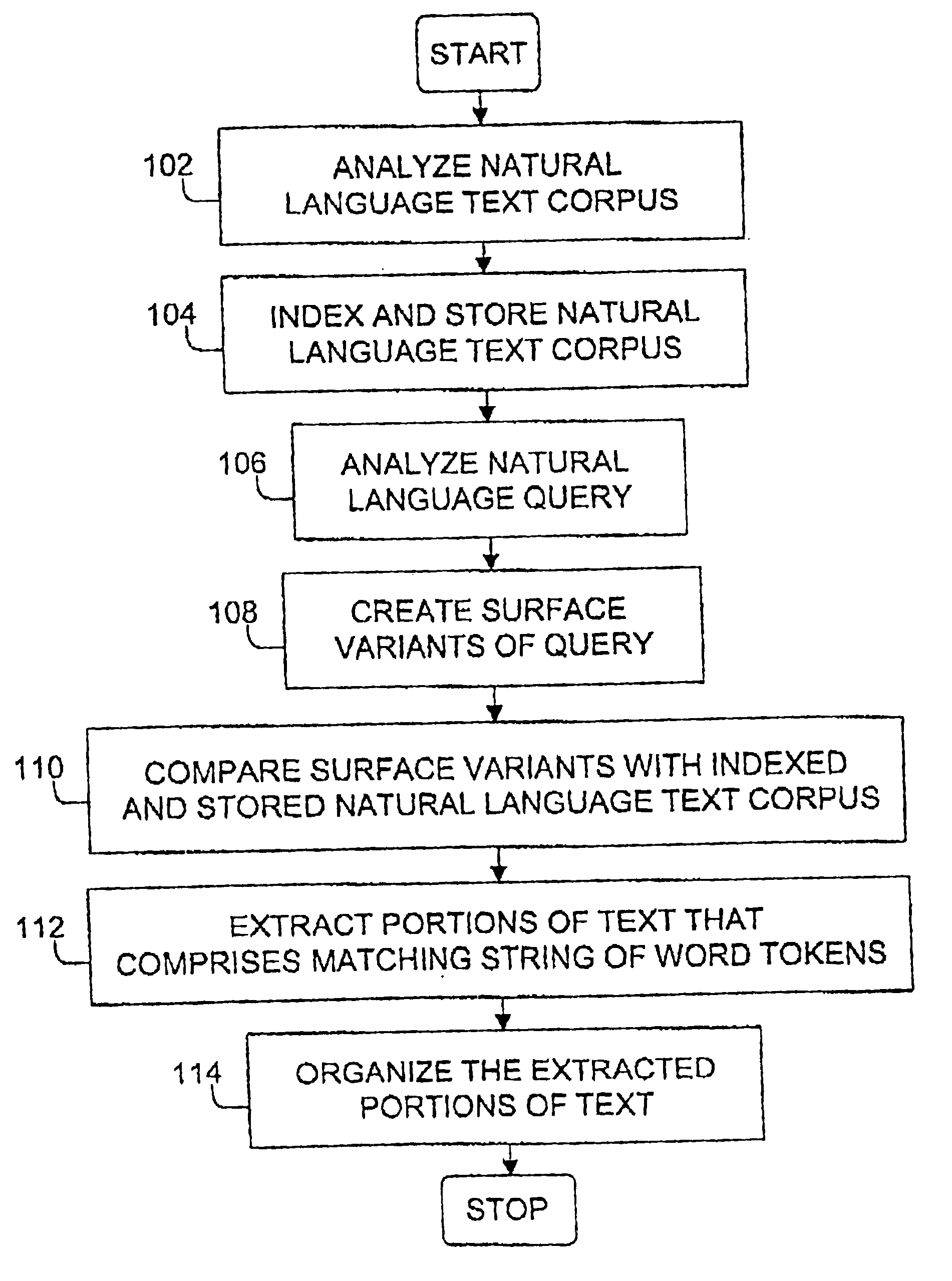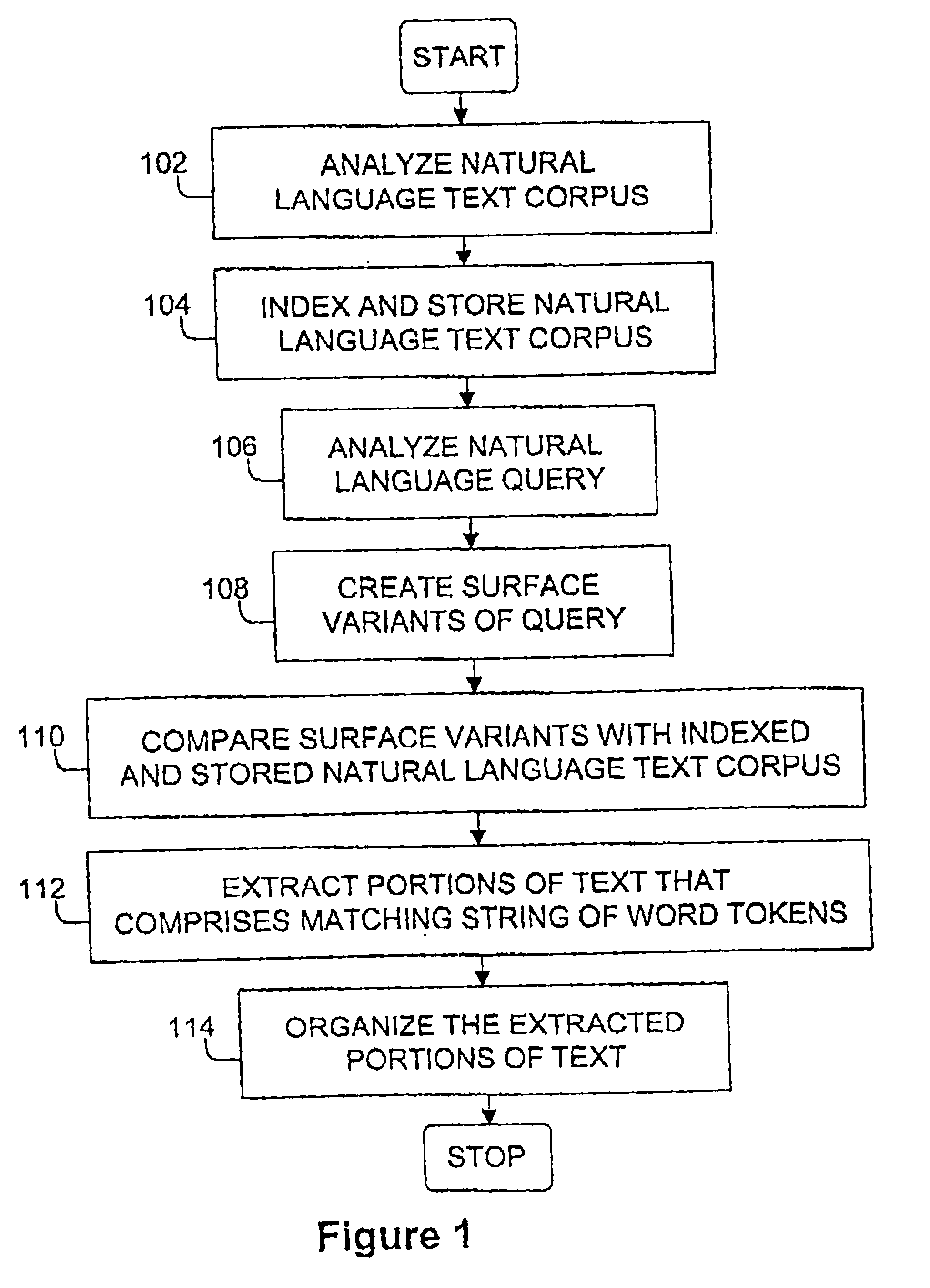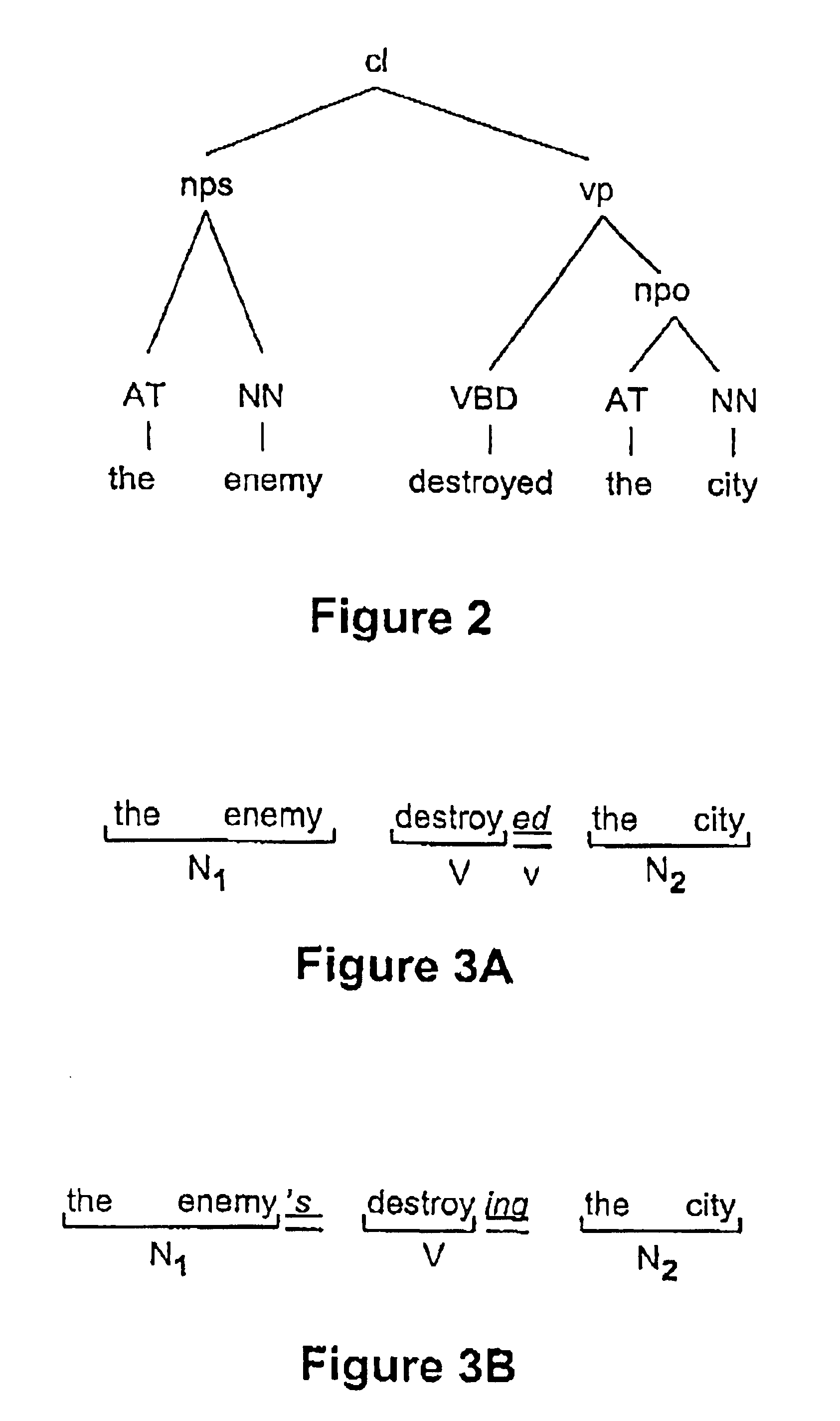Method and system for information extraction
a technology of information extraction and information retrieval method, applied in the field of information retrieval, can solve the problems of a large amount of documents, a lot of effort of the user to find the most relevant documents among the documents retrieved, and many of the documents retrieved % will be irrelevant, so as to achieve fast and reliable results, reduce the amount of retrieved information, and improve the effect of reliability
- Summary
- Abstract
- Description
- Claims
- Application Information
AI Technical Summary
Benefits of technology
Problems solved by technology
Method used
Image
Examples
Embodiment Construction
FIG. 1 is a flowchart of a method according to the invention. In the method information is extracted from a natural language text corpus based on a natural language query. One example of a natural language text corpus is a subset of the information found in web servers on the Internet. To be able to use linguistic properties of the text corpus in order to match a natural language text query against the natural text corpus the natural language text corpus is analyzed, in step 102, with respect to surface structure of the word tokens and the surface syntactic roles of the constituents of the natural language text corpus. This is done in order to determine morpho-syntactic description for each word token, locate phrases, determine a phrase type for each of the phrases, and locate clauses. The morpho-syntactic description comprises a part-of-speech and an inflectional form, and the phrase types comprise subject noun phrase, object noun phrase, other noun phrases and prepositional phrase...
PUM
 Login to View More
Login to View More Abstract
Description
Claims
Application Information
 Login to View More
Login to View More - R&D
- Intellectual Property
- Life Sciences
- Materials
- Tech Scout
- Unparalleled Data Quality
- Higher Quality Content
- 60% Fewer Hallucinations
Browse by: Latest US Patents, China's latest patents, Technical Efficacy Thesaurus, Application Domain, Technology Topic, Popular Technical Reports.
© 2025 PatSnap. All rights reserved.Legal|Privacy policy|Modern Slavery Act Transparency Statement|Sitemap|About US| Contact US: help@patsnap.com



